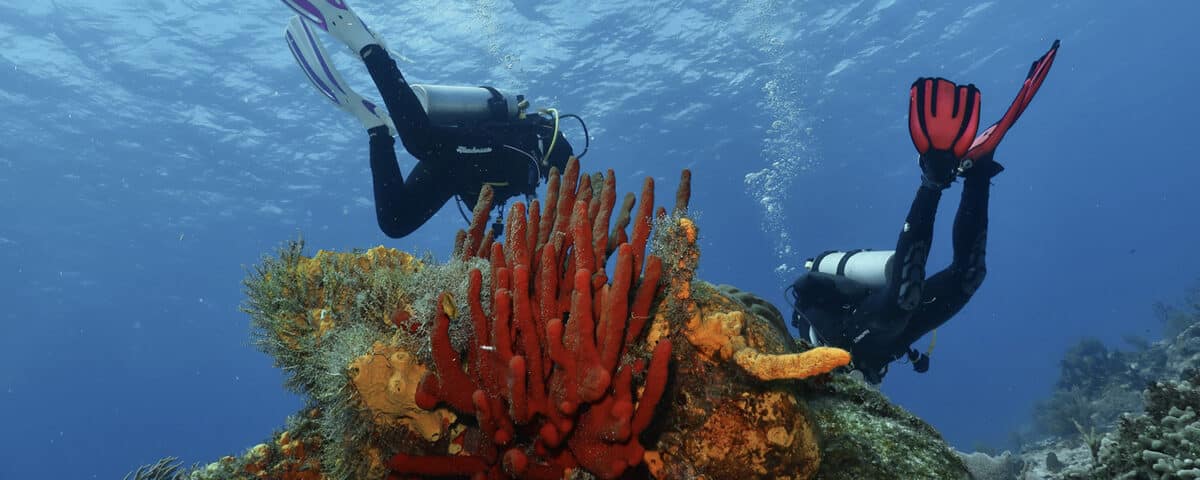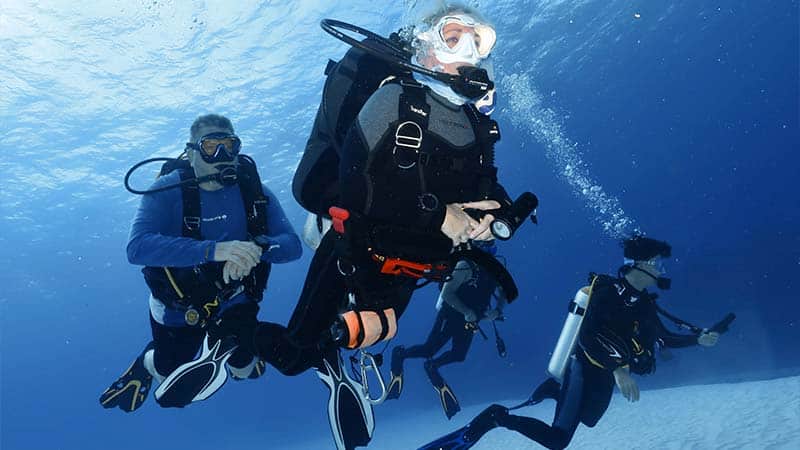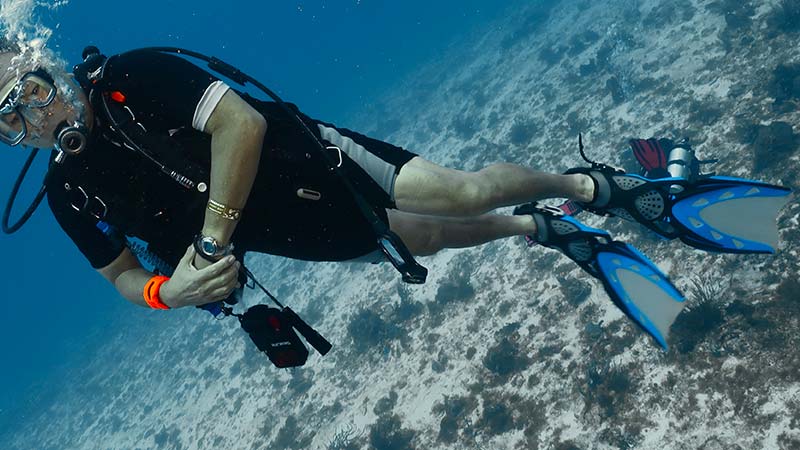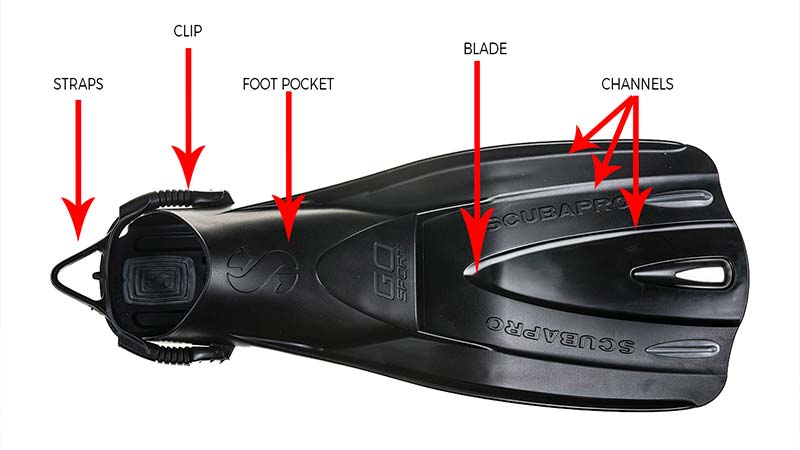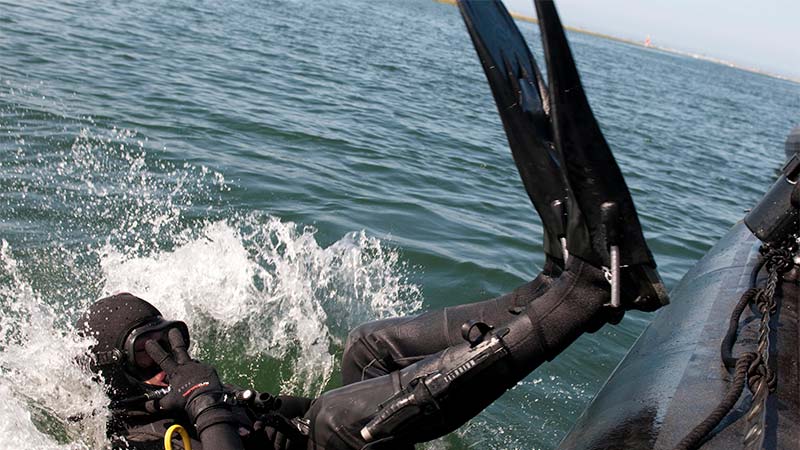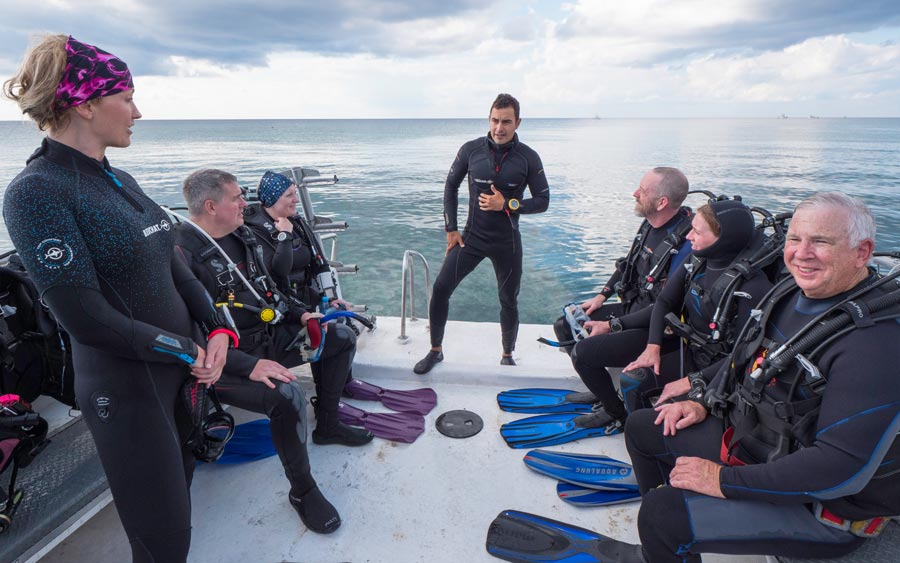1. Why It’s Important to Choose Your Scuba Diving Fins Wisely?
Diving fins condition propulsion
In fact, not only propulsion, but they also condition energy savings, the execution of the kick, and even the type of diving.
A long or wide and rigid blade diving fin provides more thrust, but moving them requires more effort. If you have a thin blade, it will be easier to move but try getting out of a current with them.
A rubber or plastic diving fin will last you a lifetime, but you’ll need leg muscles to move them for long-distance scissor kicks.
Scuba fins with a relatively short and rigid blade, such as those used for technical diving, can help you perform the frog kick and provide greater precision underwater, but you won’t move fast, that’s for sure.
The diving fin helps with movement or can be a weight
The truth is that recreational divers who enjoy diving in the Caribbean with Dressel Divers generally appreciate a lightweight fin. It should provide enough propulsion to deal with the typical currents in the area without ending up exhausted or with cramps. However…
“I have diving fins that weigh 2.5 kg/55.11 lb.” says Victor Cordoba, Director of HR at Dressel Divers, Course Director, technical diver, and expert in underwater cave exploration, when I ask him about diving fins.
“When I inflate my drysuit, the air tends to go up and accumulate in my legs. Thanks to my dive fins, I can maintain trim more easily, compensate for the positive buoyancy that the air accumulating in my legs causes, and avoid advancing with my head down. In a cave, that can be dangerous.” – Victor affirms. In other words, his diving fins, in addition to being a propulsion tool, are also part of the weight.
The diving fin affects trim
“Where the head goes, the tail follows” is a phrase my mother used to tell me, and although it has always made sense, it took on a new meaning when I started diving. That’s when I learned the word “trim,” which is nothing more than the angle at which the diver moves forward.
Recreational divers need to stay horizontal in the water column. That is, maintain neutral trim. If we are unbalanced, we will have difficulties throughout the dive. You can learn more about trim in this article: 3 Secrets of Buoyancy Control to Dive as An Expert Diver.
The correct distribution of weight is what will help us have the correct trim. As we saw in the previous point, scuba diving fins are another weight to consider. According to Diving Alert Network (DAN), regarding diving fins, “dry weight and buoyancy in saltwater can vary greatly from one model to another and from one size to another. Proper size and weight selection of dive fins makes ankle weights unnecessary and prevents knees from dropping below the horizontal axis.”




